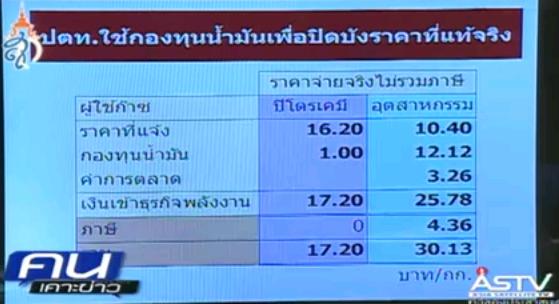Rubber and rice in Thailand: The synthetic difference
Posted on 30 August 2013

BP
: As you can see that Indonesia, Malaysia, and Thailand were roughly equal in 1990, but rubber production in Malaysia has remained fairly static whereas in Thailand it has increased exponentially.
Now, what about the price of natural and synthetic rubber?

Source: Spend Matters
BP: As you can see, it is mostly in sync aside from a little crazy period at the end of 2010 and 2011 principally due to a drought in Thailand and other countries caused by El Nino and then floods caused by La Nina where we saw a divergence between natural and synthetic rubber, the prices have basically mirrored each other.
So why is not more synthetic rubber used and why hasn’t it increased its market share since the 1960s?
From a Highbeam business report
According to the IRSG, tires utilize the largest share of rubber, nearly 60 percent of the rubber industry, with other automotive parts accounting for the remaining 10 to 15 percent. The Rubber Manufacturers Association reported that 41 percent of a tire’s composition is rubber, and natural rubber accounts for 40 percent of that share. This dependency on natural rubber leaves tire companies vulnerable to rising prices of raw materials. In 2008, prices for natural rubber reached $ 1.47-$ 1.48 per pound, representing an all-time high. Some manufacturers sought methods of increasing the share of synthetic rubber in tires in order to be able to withstand such increases without raising prices to customers. Goodyear Tire & Rubber Company, for example, announced that it developed a method to substitute 15 percent of its natural rubber usage with synthetic rubber without impacting tire performance.
Bridgestone:
Couldn’t we substitute synthetic rubber?
There are a couple of paradoxes there. First of all, a good deal of synthetic rubber comes from oil, and as we’ve seen, crude oil is the second-fastest-rising commodity of the ones we chose to review.
And, according to experts, as the price of oil goes up, the price of synthetic rubber goes up, and that actually drives the demand for synthetic rubber down.
That causes demand for natural rubber to go up, and we know what that does to its price!
BP: Yes, oil. Below is a chart looking at rubber prices with the price of oil:

Source: AlphaVN
Then between natural rubber and oil:

Source: Continental AG
BP: So is it rubber leading oil or oil leading rubber? BP would be very skeptical that it is the former… The markets don’t exactly match up and there are certainly some prospects for cartel-like behavior by governments to reduce the supply of rubber, but this is not easy because synthetic rubber can be used in some instances instead of natural rubber. BP should note that synthetic rubber is not a perfect substitute for natural rubber in all circumstances and natural rubber is not going away anytime soon, but because synthetic rubber can act as a substitute and that price of rubber is mainly dictated by the price oil, it is not so easy to influence the rubber market. Actually, the first rubber cartel collapsed in 1999, but Thailand, Malaysia, and Indonesia set up a new one. The Economist in 2003:
But there is no need for panic-buying just yet. The members of the nascent rubber cartel, like their counterparts in OPEC, are already having trouble sticking to their quotas. In August, they agreed to cut output by 4%. But faced with burgeoning sales of tyres in China, officials in both Thailand and Indonesia changed their tune. Production, they said, should grow, not shrink.
Furthermore, demand for natural rubber is, appropriately enough, quite elastic: it depends on the relative price of synthetic rubber. As it is, in 2002, consumption of synthetic rubber increased faster than that of the natural kind. If the price of oil, the main ingredient of synthetic rubber, continues to fall, that trend will only get sharper.
Supply is fairly flexible too. Although rubber trees must grow for several years before they yield much sap, enterprising farmers in other countries would doubtless start planting if the price rose sufficiently high, just as big oil firms embark on exploration and development of new fields when the oil price goes up.
BP: An abstract looking at the rubber cartel states “[t]his proves that instead of becoming an oligopoly market, the market turned out to be competitive” which suggests it has not been as successful as hoped. Nevertheless, this does not mean that the cartel can’t have some influence on price. From a Macquarie Commodities Report in 2012:
The third and most important supply-side risk is the intention of the three largest Asian producers to support falling prices by withholding supply and keeping supply tight by burning older rubber trees. Up to 450,000t of rubber could be cut back between Q4 2012 and Q1 2013, if the cartel is successful. In our analysis, such a scenario would lead to a global stock/use ratio staying tight at 13-14%, which in turn would support prices higher.
BP: To sum everything up, as BP understands the situation, synthetic rubber can act as a substitute for natural rubber in some circumstances. This makes it difficult to control the supply of natural rubber. The price of synthetic rubber is largely determined by the oil price. The end result being that the oil price strongly influences the price of natural rubber. Now, it is possible for the rubber cartel of Thailand, Malaysia, and Indonesia to try to influence the price of natural rubber, but so far this has only proved successful in the short-term with the price adjusting itself over the medium-term.
Hence, from a brief review so far, government money directed at the rubber industry – see here in case don’t get time to blog on rubber support* – is more towards in the production and planting stage and less at price support. This differs greatly from that of rice. There is also no large synthetic rice market…
*Wrote almost all of this post before most farmers accepted a deal so the issue may die down now.
btw, has the government learnt a lesson from the failure of the rice pledging scheme to have an large impact on prices in the market for rice?
Full News here – Asian Correspondent » Bangkok Pundit

























